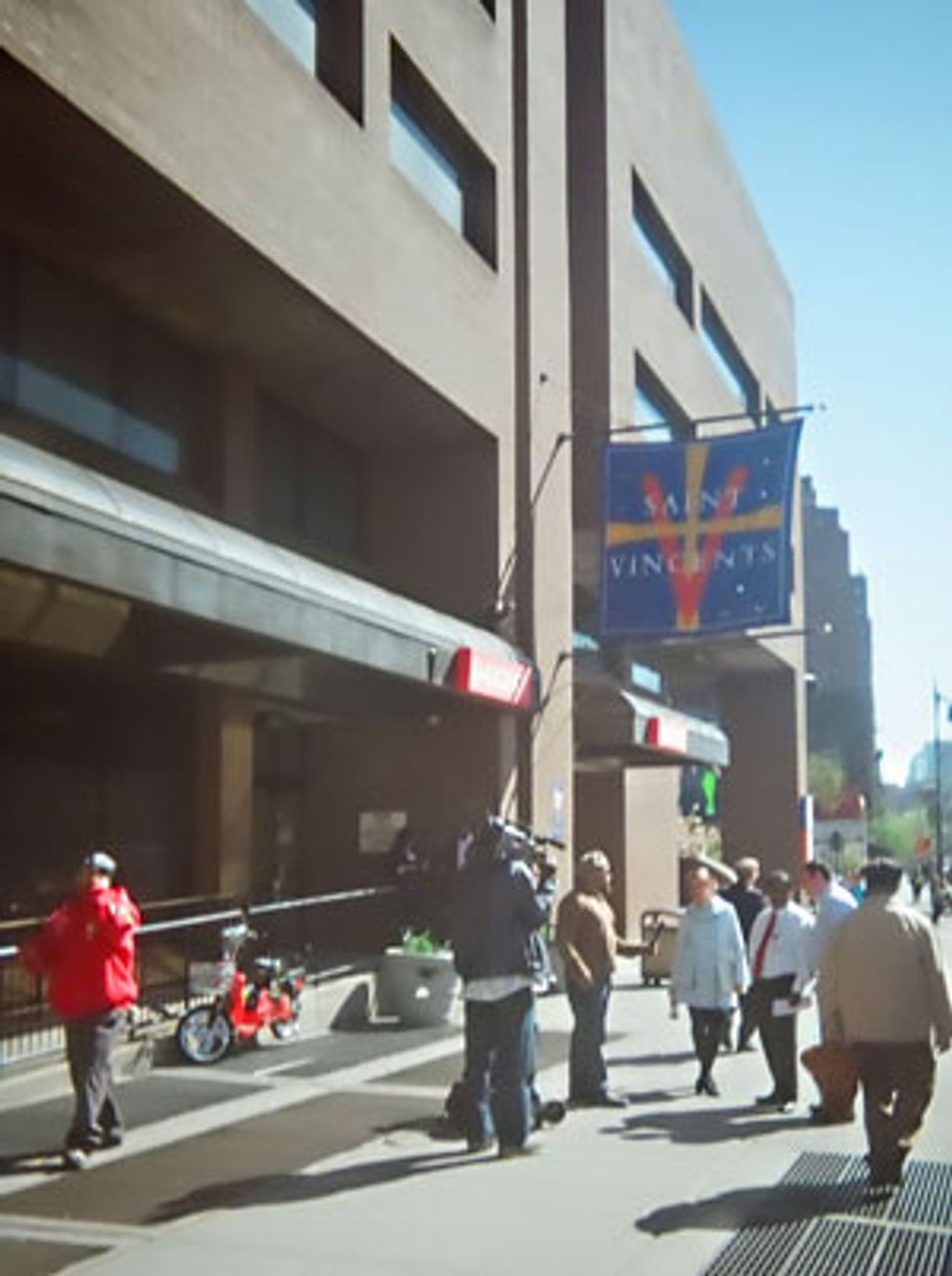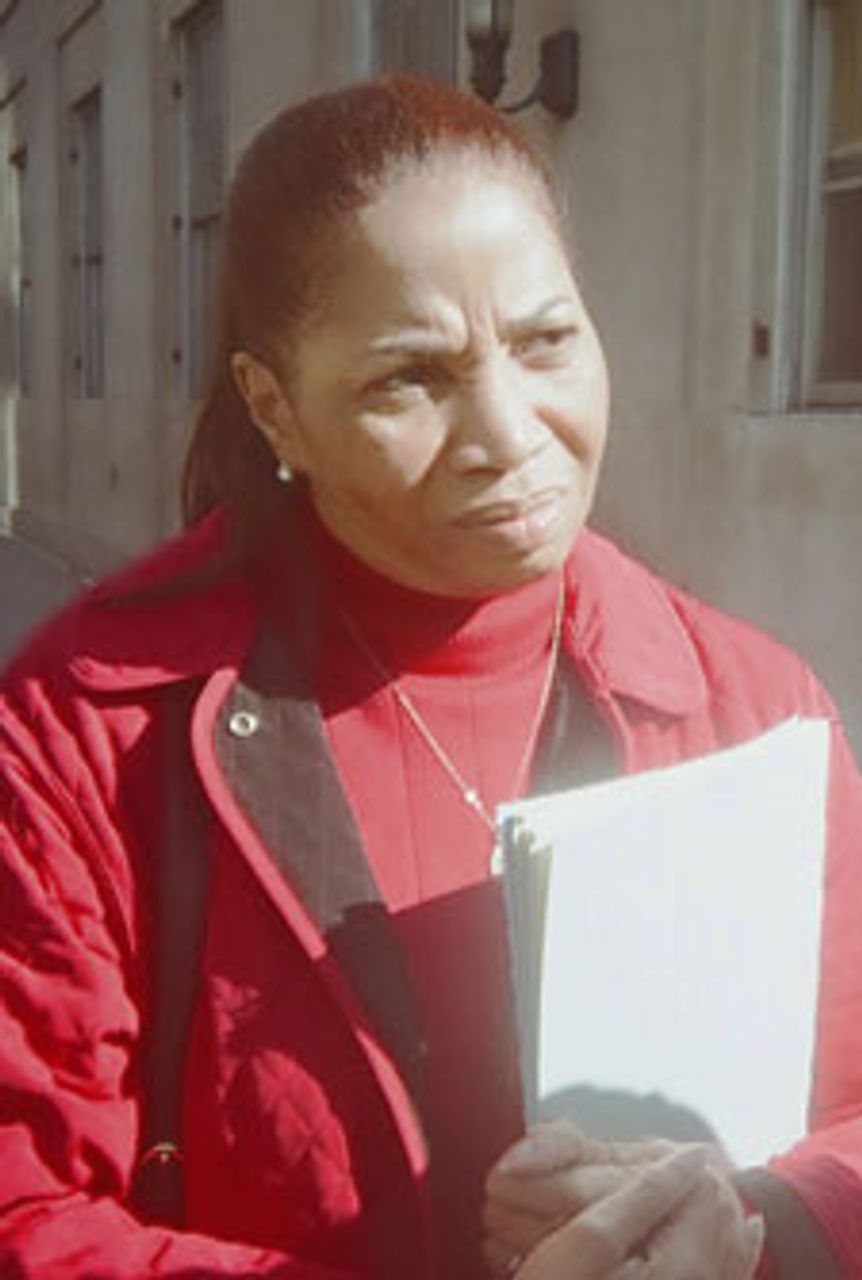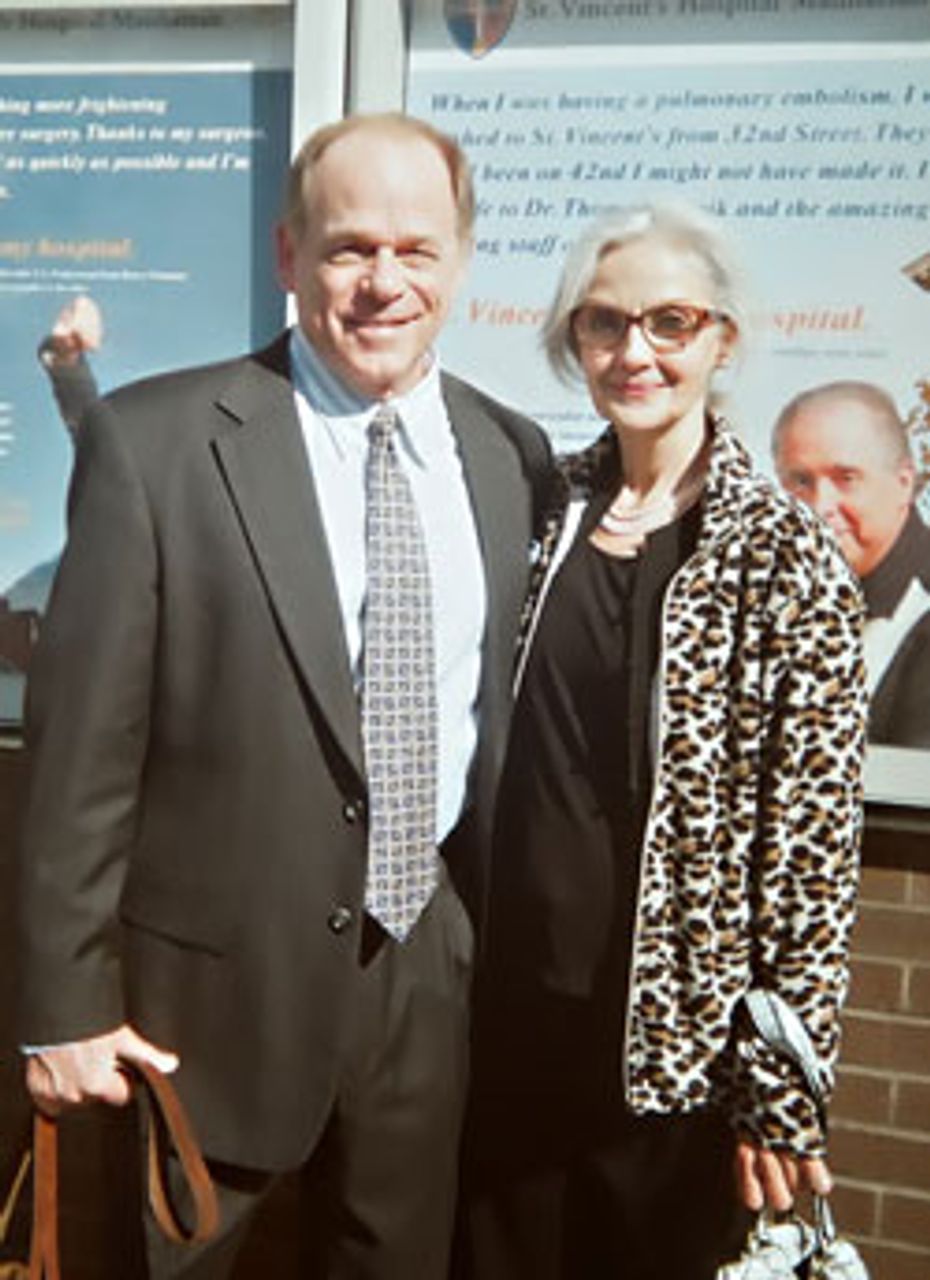New York City’s St. Vincent’s Hospital, a 160-year-old institution and one of the city’s best-known emergency care facilities, laid off 1,000 workers April 19, as it prepares to shut its doors for good in the next two weeks.
 St. Vincent’s hospital
St. Vincent’s hospitalThe hospital, in the heart of Manhattan’s Greenwich Village neighborhood, filed for bankruptcy protection last week for the second time in five years. All of its 3,500 employees have received notice that they will soon be out of their jobs. The hospital stopped accepting inpatients and scheduling electives surgeries about 10 days ago, and the emergency room has been virtually shut down.
There are tentative plans to try to maintain an urgent care center in the former St. Vincent’s to provide some emergency treatment and also to continue some outpatient services for HIV-infected patients and others. This is far from certain, however, and an urgent care center could not be obligated to treat all those who presented themselves for care. It would no longer be a Level 1 trauma center, meaning that patients with greater emergencies would be sent to full-service hospitals several miles away.
Working people in the entire lower Manhattan area are troubled and angry over the imminent closing of St. Vincent’s, which is the only hospital on the city’s West Side from the southern tip of Manhattan to 59th St.
A civil rights lawyer, Yetta Kurland, announced plans to file a lawsuit against the hospital seeking an injunction to prevent its closing “until we as a community have a chance to review the situation and see that there isn’t a way for us to ensure that a hospital, a necessary hospital is allowed to continue to operate.”
A community organization, the West Side Neighborhood Alliance, has also called a rally outside the hospital for Saturday, April 24, at 2 p.m., to protest the closure.
In contrast, the major union at the hospital, 1199 SEIU United Healthcare Workers East, has fully acquiesced to the closure and the mass layoff of its members after accepting a 10 percent wage cut in an abortive attempt to bail out the facility.
On April 7, 1199 issued a statement declaring the union “optimistic that St. Vincent’s will continue to provide most vital services through the creation of an urgent care facility that can meet virtually all the medical needs of the community.”
The 1199 statement added that “moving towards this new model while maintaining current services is the most realistic way of preserving quality care for the West Side and Lower Manhattan communities.”
This “realistic” solution involves eliminating the jobs of roughly 1,300 of the 1,500 1199 members at St. Vincent’s. The union’s principal concern has been not jobs of its members, but its own bottom line. Its benefits fund is one of St. Vincent’s main unsecured creditors, and 1199 is playing a prominent role in bankruptcy proceedings.
The union bureaucracy has merely echoed the position taken by New York’s Democratic Governor David Paterson and the city’s billionaire mayor, Michael Bloomberg, both of whom have endorsed the “new model” being imposed on St. Vincent’s.
The financial crisis afflicting St. Vincent’s has been building for years. The hospital has been devastated by the developments toward privatization and the increasing domination of private funds within the non-profit sector. This has meant skyrocketing salaries for administration and soaring costs of hospitalization and treatment. At the same time, reimbursements from government programs like Medicare and Medicaid have lagged behind, and the hospitals have competed for wealthier and fully insured patients. St. Vincent’s, the city’s last Roman Catholic hospital, has become one of the losers in this competition.
A spokeswoman for the New York state health commissioner feigned concern but callously summed up the fate of St. Vincent’s in a system in which health care is subordinated to the need for profit. “I think we’re all very much affected by what’s happening at St. Vincent’s,” said the official, Claudia Hutton. “It’s very hard on a community when its hospital closes, and it’s hard to see change. The change is happening because the business model at St. Vincent’s has not been viable.”
St. Vincent’s debt, according to the latest bankruptcy filing, now exceeds $1 billion, including $180 million owed to the federal Pension Benefit Guaranty Corporation. A spokesman for the hospital claimed this week that the pensions for nurses and other employees were “not at risk.”
The pending closure of St. Vincent’s would mark the end of 160 years of history. The hospital cared for cholera victims in 1849, the first year of its existence, and for victims of the sinking of the Titanic in 1912. Edna St. Vincent Millay, one of the most well-known early twentieth century American poets, got her middle name from the hospital, where her uncle’s life had been saved in 1892, the year of her birth.
More recently, St. Vincent’s treated many thousands of AIDS patients, both before and after the development of life-saving treatments in the mid-1990s transformed the disease, at least in the US, from a fatal affliction to what is now most often a treatable illness. It also became a center of attention in the days and months after the terrorist attacks of September 11, 2001, when a “wall of remembrance” was established outside the hospital, the closest full-service medical facility to the World Trade Center.
Without St. Vincent’s, seriously ill patients will have to be taken to Roosevelt-St. Luke’s Medical Center, more than two miles north, or to Beth Israel Medical Center or Bellevue, several miles to the east. The hospital’s five ambulances have covered the entire area from Battery Park City at the tip of lower Manhattan to the Garment District in midtown.
Emergency workers and other professionals have confirmed that unnecessary deaths are inevitable if St. Vincent’s closes. Press reports quote one paramedic, who had picked up a patient in Greenwich Village on an early Sunday morning and taken him to Beth Israel. “We drove right by St. Vincent’s,” said the worker. “There is going to be a tragedy. I guarantee it.”
An attending physician at St. Vincent’s, Dr. Maria Rolon, told the New York Times of how the hospital had recently treated a patient in anaphylactic shock after eating a cookie with nuts. He walked across the street to St. Vincent’s, but if he had required transportation across town, he could have died.
The World Socialist Web Site spoke to St. Vincent’s workers, patients and community residents outside the hospital in Greenwich Village.
“It is a very sad day for the neighborhood and a very sad day for the workers,” said Jeffrey Salters, an operations assistant.” If a person has an emergency, they will have to be shipped uptown, which takes more time. This could be life-threatening. The ambulance may not have enough time to save the patient’s life.
“I have been working here since I was 18 years old, for 42 years. This hospital may close at any time. I am hurt and disappointed. I have dedicated more than two thirds of my life here.
“The union that I am a member of, 1199, has helped set up a jobs fair in the hospital. God knows how many people were there—I can’t even count that high. If I don’t find anything, I might be joining the unemployed.”
Imogene Perry, who works in the St. Vincent’s trauma unit, told the WSWS: “The closing of this institution will be very damaging to the health of the community. The people here will have to go to another hospital some distance away.
“I am very disappointed with the mayor, who shows no concern for us. He has pulled out all the ambulance services that always came here. You used to see a line of ambulances in front of the hospital and now you see none. The mayor is a multibillionaire, and he has done nothing to help. He has enough personal wealth to bail out St. Vincent’s. I voted for him, and I regret it. He is not working in the interest of low-income people.”
 Pauline Brown
Pauline BrownPauline Brown, a medical assistant in the hospital’s obstetrics clinic, said: “We took a 10 percent wage cut about five weeks ago to help save the hospital. The union leadership of 1199 agreed and recommended this. And I am now finding out that the hospital is closing anyway. The union should really do something to stop this.
“I think it is horrible that they are closing down this hospital because if you don’t have your health, then you don’t have anything. The community depends on this hospital.
“I am 62 years old, and if I do not get another job I can still retire. But I love my job, and I love working with and helping patients; that is the type of person that I am. I have always enjoyed working in St. Vincent’s, which I have been doing for the last 24 years.”
One patient told the WSWS: “I’ve been a patient here for about 10 years since I was diagnosed with HIV. The hospital closure will mean that I will have to travel to somewhere else much farther away to get treatment. I live on 34th Street; so I can walk here. I thought Governor Paterson was helping. What has happened to that help? Why hasn’t Obama come in to bail out this hospital? He has bailed out AIG and the banks. My doctors and nurses told me it is the corporate heads who have screwed up this hospital over the last 10 years with the deals they were making with the insurance companies.
“There are over 35,000 HIV patients at St. Vincent. My doctor alone has 1,200 patients. What I’ve heard is that as of now, the HIV Clinic will stay, but the surgical and emergency care will be taken away. This is a terrible denial of care.”
 Peter Ratray and Donna Mitchell
Peter Ratray and Donna MitchellPeter Ratray and Donna Mitchell, both directors and actors, live in the community and are also angry over the decision to close St. Vincent’s. “I think it is a tragedy,” Peter said. “People I’ve known were treated very well here. I’ve had experiences with four friends who came here for treatment of serious or fatal conditions. Three of the four came here because they had no insurance and couldn’t go anyplace else. I had the experience of visiting them here, and my friends were treated with exceptional care and dignity. They passed here. I don’t know what is going to happen to people like that with St. Vincent’s closing. I think this is terrible.”
Donna explained, “To have this large an area in New York City with no hospital is dangerous. I took advantage of the service at St. Vincent’s on a number of occasions when I had medical emergencies in the middle of the night, and I had the best of service. St. Vincent’s has always been a hospital for the poor, and this is why the powers that be are not so concerned about closing it down.”
